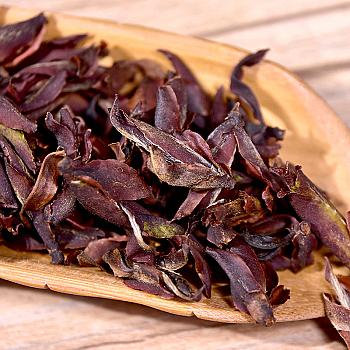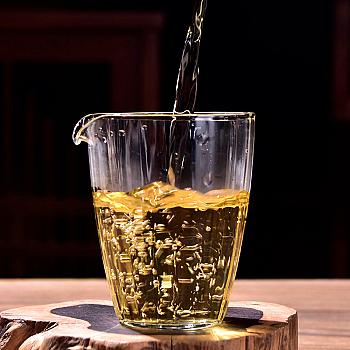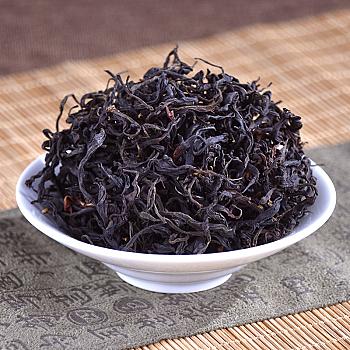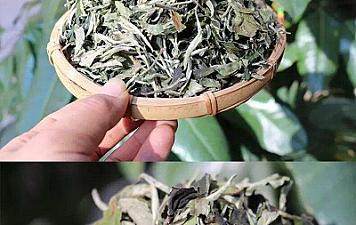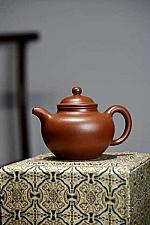
What is Tea Polyphenol? Why does Pu-erh tea have more of it?
August 14, 2025
I. The definition of Pu-erh tea is based on the National Standard "Geographical Indication Products - Pu-erh Tea" (GB/T22111—2008) that defines Pu-erh tea as: " Pu-erh tea is made from raw materials of Yunnan big leaf tea grown within the geographical indication protected area, and processed by specific techniques in accordance with the requirements of the geographical indication protection area. It has unique quality characteristics."
One, definition of Pu'er tea
According to the national standard GB/T 22111-2008 for geographic indication tea products Puer Tea, the definition of Puer tea is: "Puer tea is made from Yunnan big leaf variety green tea materials within the protected scope of the geographical indication and processed with specific processes within the same range, possessing unique quality characteristics. According to its processing technology and quality characteristics, Puer tea is divided into two types: raw Puer tea and ripe Puer tea."


Pu-erh tea is made from large-leafed green tea that is dried in the sun, then steamed and pressed. Pu-erh fermented tea is made from large-leafed green tea, after a suitable period of damp stacking, through microbial fermentation to form semi-finished products, after screening to form classified loose tea (fermented loose tea), followed by pressing into bricks, cakes, tubular, column-shaped tea (i.e. fermented pressed tea).

"The older the Puer, the stronger the aroma" is one of the main characteristics of Pu'er tea that distinguishes it from other types of teas. It is also at the core value of Pu'er tea and the ultimate pursuit of tea enthusiasts in the market.

From a chemical perspective, Pu-erh tea undergoes at least three changes during the aging process: Firstly, large quantities of catechins are reduced in long-term storage, causing bitterness and astringency to be decreased and the original mixture ratio changed. Secondly, oxidation and polymerization reactions occur among some main components in Pu-erh tea, resulting in the production of new substances such as melanin and recombined polysaccharides, which make the tea brew become red and transparent, rich, mellow and smooth with a long-lasting aftertaste. Thirdly, aromatic compounds transform and become more intense with the aged aroma.

In Pu-erh tea, polyphenols undergo an oxidative polymerization under the action of enzymes: Polyphenol → Theaflavin → Thearubigin → Tea brown pigment. The polyphenols in Pu-erh tea largely disappear during oxidation and are replaced by large amounts of thea brown pigments, which were originally water-soluble.
II、What is melanoidin?
Theaflavin (TB) is a type of brown, water-soluble polymeric compound that forms from the oxidation and polymerization of theaflavins such as theaflavin and thearubigin. It naturally occurs in red tea, green tea and black tea, with higher concentrations found in black tea.

Catechins in the structure contain hydroxyl, carboxyl groups and other functional groups, which have potent antioxidant effects.
(1) Tea polyphenols can antioxidant
Exposure to outdoor light, air pollution, smoking and pesticides can increase the amount of active oxygen free radicals produced by the body, causing DNA mutations that lead to aging and disease. The extract of tea pigment has a significant effect on eliminating hydroxyl free radicals, superoxide anion free radicals, and DPPH free radicals.
(2) Tea polyphenol can lower cholesterol and lose weight.
Hyperlipidemia refers to abnormal blood lipid diseases in which the cholesterol (TC) and triglycerides (TG) in the blood are high or the high-density lipoprotein cholesterol (HDL-C) is low. At present, it has been proven through animal experiments that tea polyphenols can significantly regulate the metabolic pathway of blood lipids in hyperlipidemic mice, reduce the content of triglycerides in the serum of hyperlipidemic mice, promote the transformation of cholesterol, and also promote the excretion of cholesterol from the body of rats, thereby achieving the effect of reducing cholesterol, triglycerides, and total protein lipid content.
(3) Tea polyphenols can lower blood sugar.
The study discusses that Pu-erh tea polyphenol extract can increase the sensitivity of insulin, effectively lower blood sugar levels in type 2 diabetic mice and improve their glucose and lipid metabolism. Tea polyphenols have a protective effect on the toxicity of INS-1 cells induced by acidic tea polysaccharide palm acid, promote cell proliferation, and achieve the purpose of lowering blood sugar; and discover that tea polyphenols can significantly improve glucose and lipid metabolism.
(4) Catechins can be anti-cancer
Catechin has significant anti-tumor effects by inhibiting cell proliferation, inducing apoptosis, regulating cell cycle and controlling signal transduction pathways. In a paper titled "Extracellular Antitumor and Anti-Metastasis Effects of Pu-erh Tea Coarse Extracts on BALB/c Mice" by Zhao Xing et al., the antitumor effects of pu-erh tea crude extract on TCA8113 human tongue squamous carcinoma cells in vitro and 26-M3.1 colon cancer cells in vivo were evaluated: Pu-erh tea crude extract at a concentration of 200 μg/mL had significant inhibitory effect on the growth of TCA8113 cells, with an inhibition rate of 84%, and pu-erh tea crude extract at a dose of 1600 mg/kg significantly inhibited the metastasis of tumors induced by 26-M3.1 colon cancer cells in BALB/c mice, with an inhibition rate of 50.9%.
(5) Tea polyphenols have antibacterial and enzyme inhibition activity
Yue Suijuan et al. discussed in "Pu-er tea tea melanin on the impact of rat gastrointestinal flora" that through gavaging mice with melanin, analyzing its effect on the intestinal bacteria of the mouse, found that melanin can adjust the disorder of the intestinal bacteria, promote the growth of Lactobacillus and Bifidobacterium in rats, inhibit the growth of E. coli and Bacillus typhi and, over time, the effects became more obvious. Nie Kunlun, Bian Jinlin et al. found that melanin could inhibit α-amylase, lipase, and pepsin activity.
(6) Catechins can fight fatigue.
Gong Jashun et al. investigated the function and toxicity of Pu-erh tea in relation to its content of tea polyphenols, using mice as experimental subjects. They found that Pu-erh tea can significantly improve the fatigue resistance of mice by prolonging their swimming time in a water tank at 28 ℃.
In summary, pu-erh tea contains theaflavins with multifunctional properties such as antioxidation, lipid-lowering and weight reduction, hypoglycaemia, anticancer, antibacterial activity, inhibition of enzyme activity, antifatigue, etc.
